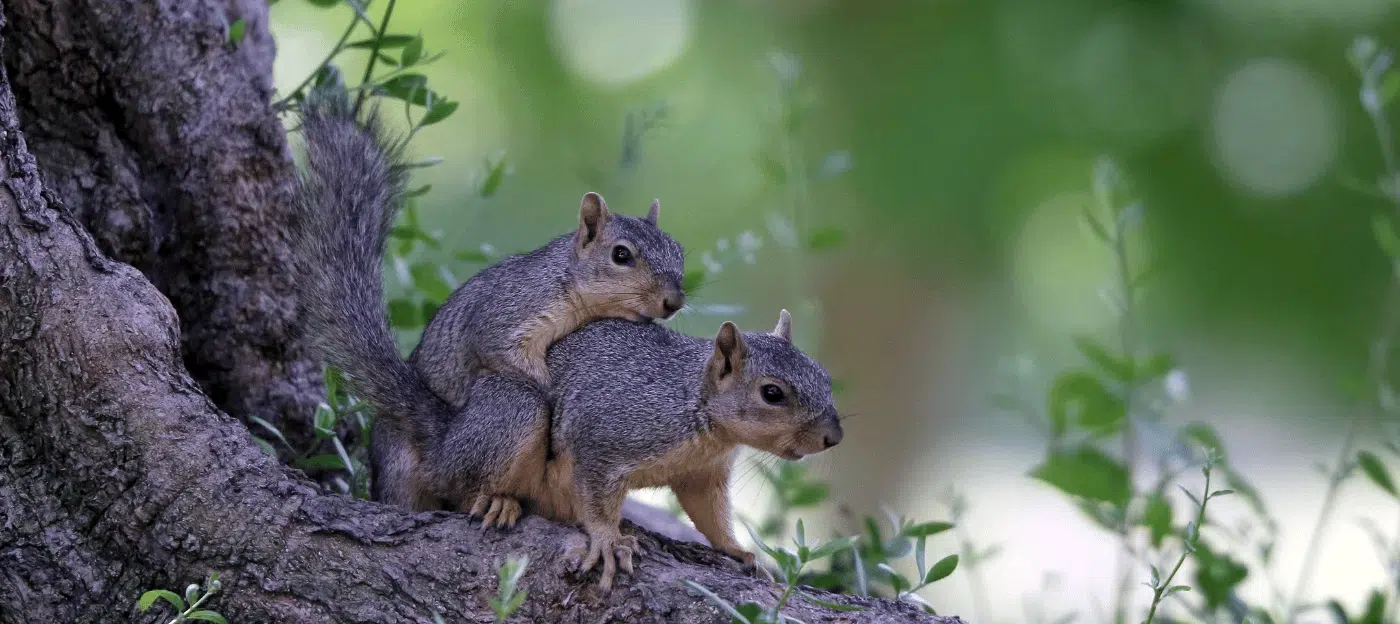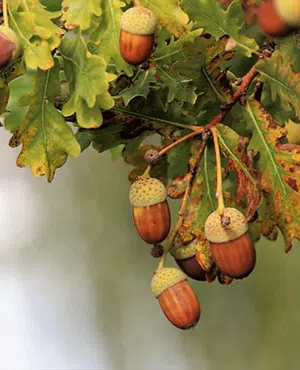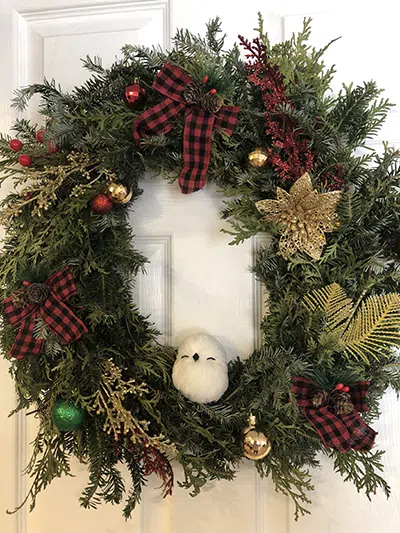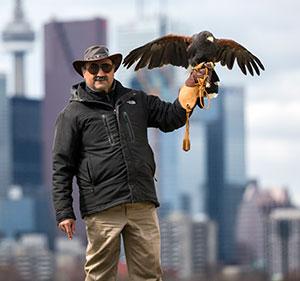The Eastern Grey Squirrel (Sciurus Carolinensis) is what we typically see in Ontario. While called the Eastern Grey squirrel, it actually isn't necessarily grey coloured but can appear black, grey, or brindle. There is a theory that the darker the squirrel, the better equipped for cold climates it is - that black coloured Eastern Grey squirrels have a geneting mutation that allows for better adaptation to low temperatures.
In contrast to the lesser present Red Squirrel, these agile and entertaining acrobats have generally two breeding seasons. Join us as we explore the factors influencing the reproductive cycles of squirrels!

Squirrel Breeding Season: When Do Squirrels Have Babies?
In Ontario, squirrel babies are born in spring and often again, in the fall season. First time squirrel mothers will often have just one litter in their first year of sexual maturity. Scent plays a large role in squirrel mating and breeding rituals. No, famale squirrels will not spritz the Chanel No 5 kind of scent, but rather mark their territory and signal their ability and willingness to mate. In turn, nearby males will then evalulate the information gathered from the scent left for them and pursue the lady of their choice, with the strongest, most dominant, and often older males having a bit of an advantage. The courting ritual consists of a noisy mating chase by one or more males pursuing the female through the trees. Ms Squirrel, however, is the one in charge here. SHE will determine who gets the privilege of being her baby daddy. Both male and female squirrels may have multiple partners in one breeding season, although the first male to mate with a female is usually the one to impregnate her. He will leave a waxy plug in her vagina and thus blocking other male's sperm.
 Spring Breeding
Spring Breeding
Spring squirrel mating and breeding season kicks into high gear between December and January and extending into February, depending on the severity of the winter and availability of food. Momma will give birth to her squirrel kits after a roughly 44 day getstation period to one to six wee ones, with older and more experienced females having larger litters. Squirrel nesting behavior means that her little ones will stay with her in the nest exclusively for at least six weeks (that's why you generally won't see very small squirrels in your yard) and then set out on their own after mum deems their survival training complete. This frees mum up to consider one more litter.
Fall Breeding
If not first time/season moms, Eastern Grey squirrels will often breed again between June and August, with the fall litter usually arriving late summer or early fall. These little ones will be ready to leave home and explore the world on their own just before winter. Mum will have taught them the art of nest building, but they may also choose to renovate an existing abanoned nest. Red squirrels will sit this one out; they only breed once in the spring.
Factors Influencing Squirrel Breeding
It makes sense that newborn squirrels aren't arriving in the midst of winter. As with all species, little ones need warmth and mum has to be able to feed herself while nursing, and then her offspring. Squirrels do not hibernate and are active throughout the winter. They are master architects when it comes to nest building. both for child rearing and to survive our harsh winters - learn more about squirrel nests and dreys »
Seasonality
The spring breeding is the one shared by all squirrels, although the mating actually takes place while winter is still in full swing. The fall (or late summer) squirrel breeding season observed by the Eastern Greay squirrel seems to be much more in line with sumer fun and frolicking in the sunset :)
 Food Availability
Food Availability
Squirrels are industrious little gatherers, stockpiling food all year long to help them make it through a long winter. There are indications that breeding overall may increase if there is plenty of food available. As well, litter size may even increase after a particularly prosperous year where food is readily available to stash away. The type of foods fit for stashing include nuts, seeds, and acorns while squirrels snack on tree flowers and tree buds from trees such as butternut, cedar, dogwood, elm, hackberry, hemlock, hickory, maple, mulberry, pine and spruce when available. Mushrooms and fungi are also on the menu from time to time.
Temperature
The onset of mating season can also influenced by temperatures. A mild winter with higher temperatures may signal an earlier start of the squirrel mating habits. Likewise, an exceptionally cool summer may have an impact on the fall breeding season. But, let's hold that thought. There's another imp;ortant factor.
Photoperiod
Here's that other factor: photperiod - meaning the amount of daylight hours. For so many animals this actually has far more influence over things from growing or shedding a winter coat, to egg production than temperature. It also affects the readiness for mating and breeding of squirrels. Simply put, the increasing or decreasing amount of dailight can be much more reliable when it comes to signalling the change of season.
Understanding Squirrel Mating Habits and Breeding Cycles in Urban Environments with Hawkeye
Now that you aware of the squirrel breeding timelines, it's time you had a walkaround your home. You will want to avoid hosting a thriving squirrel family in your attic at all cost. The damage these little critters can leave behind is really quite impressive and significant. From insulation disturbed during nest building to chewed wiring to make room for said nest, you may suddenly find structural damage to your roof due to compromised insulation or ripped up shingles or even arcing wires and a potential fire. This is in addition to unsanitary squirrel droppings with a host of parasites to impact your health.
Prevention is key! Your annual home check list should include inspection of your foundation, your roof, your chimney, your siding as well as your outbuildings. Make repairs to any holes/openings you find, and secure any loose roofing shingles. Also trim back trees and large shrubs that grant access to your roof. Keep in mind, that squirrels are excellent climbers and jumpers.
If you should find yourself the unwilling host of squirrels in your home, it's time to call Hawkeye Bird & Animal Control. As Certified Wildlife Control Specialists we have the tools and experience to trap and evict your uninvited house guests. Call Hawkeye today and take back your home!














